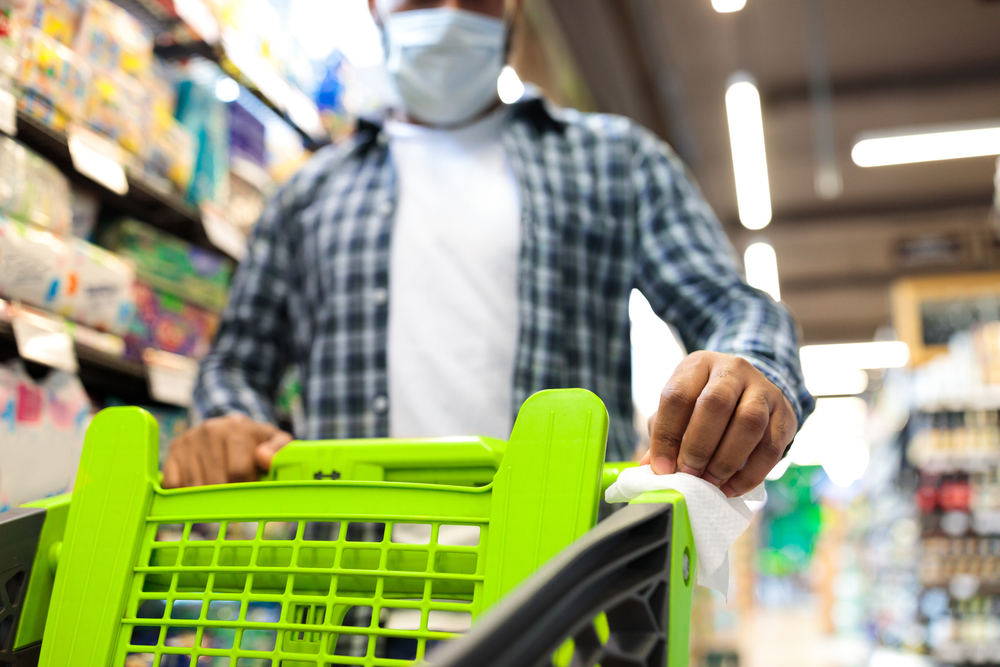
Image source: shutterstock.com
Some stores feel tense the moment shoppers step inside. The lighting, the noise, the layout—everything presses in at once, creating an edge many try to ignore but can’t quite shake. When shoppers feel unsafe, they change how they move, what they buy, and whether they return. The stakes are high for retailers because safety shapes trust, and trust shapes loyalty. And the growing number of places where shoppers feel unsafe shows how complex the retail environment has become.
1. Poor Lighting and Blind Spots
Dim aisles create more than inconvenience. They create uncertainty. Shadows hide corners, narrow aisles limit visibility, and blind spots form gaps where shoppers feel unsafe without always knowing why. Lighting shapes perception, and perception guides behavior. In grocery stores, every darkened aisle invites hesitation.
Some stores use outdated bulbs that cast uneven light, leaving small pockets of space where visibility drops. Others rely on motion sensors that flick on seconds too late, giving people a brief jolt of unease. These effects seem small but add up fast, especially at night when customers want clear sightlines and reliable cues.
2. Visible Theft and Disorder
Shoppers react strongly to chaos. When merchandise sits scattered or packaging lies ripped on the floor, it signals a breakdown in oversight. People fill in the gaps: If no one is monitoring the shelves, what else is slipping through? And what might unfold next?
Theft has become more visible than ever—brazen, fast, and unpredictable. When shoppers watch someone take items and walk out without consequence, it shifts the atmosphere instantly. They may not articulate it, but the message is unmistakable. If staff can’t intervene, customers wonder who can.
This is one of the clearest triggers for when shoppers feel unsafe because it’s a moment that breaks the unspoken retail contract: the expectation that the store is a controlled environment.
3. Understaffing and Absent Employees
When floors feel empty and registers sit unoccupied, tension builds. People want to know someone is available if something goes wrong. Without that presence, routines feel riskier. A simple spill on the floor becomes a hazard. A loud argument becomes a potential threat.
Staff shortages show up in subtle ways—slow responses, neglected aisles, long lines. The absence of employees makes customers rely on themselves more than they should in a public retail space. Some shoppers feel unsafe the moment they realize no one else seems to be watching the room.
4. Aggressive Behavior From Other Customers
Retail stores bring together strangers with different stress levels, intentions, and expectations. Sometimes that mix sparks conflict. A heated argument at self-checkout. A shove near a narrow aisle. A customer is yelling into a phone while blocking the entrance.
People remember these moments. They’re sudden and unsettling. And they raise the question no one wants to ask aloud: If this is happening out in the open, what might happen next? When shoppers feel unsafe because of other customers, they leave the store with a story—and often a decision not to return.
5. Poor Store Layout and Congestion
Crowded layouts amplify tension. Tight aisles, blocked pathways, and confusing floor plans trap people in small pockets where they can’t move freely. Movement is a basic part of feeling safe. When it’s restricted, stress increases.
Some stores squeeze displays into every open space, hoping to boost sales. Instead, they create choke points where shoppers feel unsafe simply because they can’t exit quickly or avoid conflict. Every blocked path is a small reminder that control is limited.
6. Lack of Security Presence
A security guard isn’t just a deterrent. It’s a signal that the store pays attention. In high-traffic locations, especially, the absence of visible safety measures leaves customers guessing. They don’t know who responds if something escalates. They don’t know the boundaries.
This becomes more noticeable in stores that recently cut back on security staff. Regular customers sense the difference immediately. The shift from a monitored environment to an unmonitored one creates a gap that shoppers feel the moment they walk in. In that gap, shoppers feel unsafe and on their own.
7. Harsh or Unpredictable Store Announcements
Announcements set the tone. A calm reminder about store hours is one thing. A sudden warning about suspicious activity is another. When messages sound urgent, unclear, or overly harsh, customers pick up on it. They may not know the details, but they sense a problem.
That unease lingers long after the speaker clicks off. The store may think it’s being responsible, but the effect often feels destabilizing.
The Changing Threshold for Feeling Safe
People are becoming sharper observers. They read environments quickly and adjust without hesitation. What once felt like minor inconveniences now shape the overall shopping experience. This shift explains why shoppers feel unsafe in stores that once seemed ordinary. The threshold has moved, and retailers must move with it.
The most effective changes aren’t flashy. Clear lighting, visible staff, open layouts, and steady communication create a sense of order that customers feel immediately. When a store feels predictable, shoppers feel safe enough to stay, browse, and return.
Have you ever walked into a store and felt uneasy right away? Share your thoughts in the comments.
What to Read Next…
- 6 Reasons The Parking Lot At Your Grocery Store Is Not Safe
- 5 Supermarkets Under Fire For Alleged Racial Profiling Of Shoppers
- 7 Signs Someones Watching You At The Grocery Store And What To Do Next
- Whos Working The Register 5 Reasons There Are No Cashiers Available At Your Grocery Store
- 5 Controversial Tactics Used By Retailers To Combat Shoplifting
